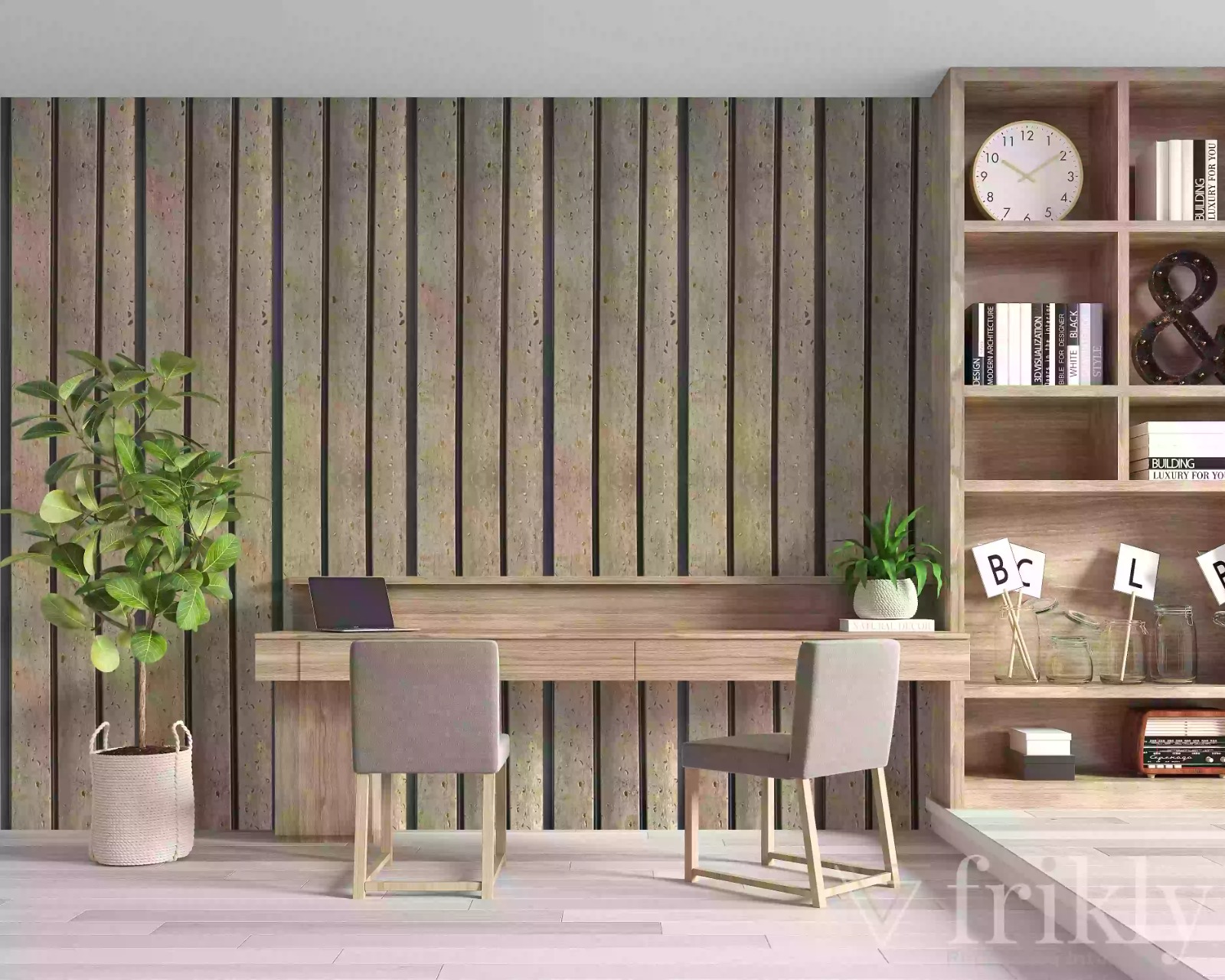
Sound shapes how we experience a space, yet it is often overlooked in interior design. A Textured wood wall offers a solution that is both beautiful and functional, transforming any room into an acoustic oasis. At SlatSolution, we specialize in designs that harmonize style with sound, proving that a wall can be more than just a backdrop—it can enhance comfort, mood, and productivity.
How a Textured Wood Wall Improves Acoustics
Flat, hard surfaces reflect sound, creating echoes and noise that disrupt the serenity of a room. A textured wood wall absorbs and diffuses sound waves, reducing unwanted reverberation while maintaining a natural, elegant look.
Sound Absorption and Diffusion
The uneven surface of a textured wood wall breaks up sound waves, distributing them more evenly across the room. This makes it ideal for spaces such as home theaters, offices, or music studios where clarity and balance are essential.
Reduces Noise Pollution
Whether you live in a busy city or share a multi-story home, a textured wood wall can reduce noise from neighboring rooms or external traffic. It acts as a barrier that softens sounds while adding a visual statement.
Popular Acoustic Textured Wood Wall Designs
Designing a textured wood wall for acoustic benefits doesn’t mean sacrificing style. Here are some designs that marry aesthetics with sound optimization:
1. Slatted Wood Panels
Slatted wood panels create grooves that trap sound, making a textured wood wall both functional and stylish. Varying the depth and width of the slats can enhance sound diffusion while creating visual interest.
2. 3D Wooden Tiles
3D wooden tiles with geometric patterns offer a tactile and acoustic advantage. Each protrusion scatters sound waves, turning a simple wall into a sophisticated textured wood wall that improves room acoustics.
3. Reclaimed Wood Layers
Layered reclaimed wood not only provides a rustic charm but also serves as an acoustic buffer. Each plank’s thickness and uneven surface contribute to a textured wood wall that dampens sound effectively.
4. Combination with Acoustic Panels
For maximum effect, a textured wood wall can be combined with hidden acoustic panels. This ensures optimal sound control without compromising the warmth and beauty of natural wood.
Tips for Designing Your Acoustic Textured Wood Wall
Creating an effective textured wood wall requires thoughtful planning to maximize both visual and acoustic benefits.
Strategic Placement
Identify walls that receive the most sound reflection, such as those opposite windows or adjacent to open spaces. A well-placed textured wood wall can dramatically improve sound quality in the room.
Choosing the Right Wood
Different types of wood absorb sound differently. Denser woods like oak or walnut provide strong diffusion, while softer woods like pine can enhance absorption. Selecting the right type ensures your textured wood wall performs optimally.
Lighting to Enhance Texture
Directional lighting enhances the depth of a textured wood wall, creating shadows that emphasize texture while complementing acoustic function. Track lighting or wall-mounted fixtures work particularly well.
The Multifunctional Benefits of a Textured Wood Wall
A textured wood wall does more than improve sound—it elevates the overall environment.
Aesthetic Appeal
The natural grains and patterns of wood create a timeless design element. Your textured wood wall becomes a focal point that elevates the room’s style and sophistication.
Wellness and Comfort
Reduced noise levels contribute to mental clarity, relaxation, and productivity. By installing a textured wood wall, you create a space that feels calm, organized, and inviting.
Increased Property Value
Homes and offices with high-quality design features, including textured wood walls, attract attention from buyers and tenants. A stylish, functional wall can increase both appeal and market value.
Maintenance Tips
A textured wood wall is low-maintenance but requires regular care to preserve its appearance and acoustic performance. Dust gently with a microfiber cloth, and occasionally polish with wood-safe products to maintain its warmth and texture. Proper care ensures your wall continues to perform acoustically while remaining visually stunning.
Conclusion
Transforming your space into an acoustic haven is easy with a textured wood wall. It provides a perfect blend of sound control, style, and warmth, making every room more comfortable, inviting, and visually captivating. From slatted panels to 3D tiles and layered reclaimed wood, the options are endless for creating a textured wood wall that meets your aesthetic and acoustic needs. At SlatSolution, we’re dedicated to helping you craft spaces that are as serene as they are stylish. Embrace a textured wood wall today and experience the difference in both sound and design.





